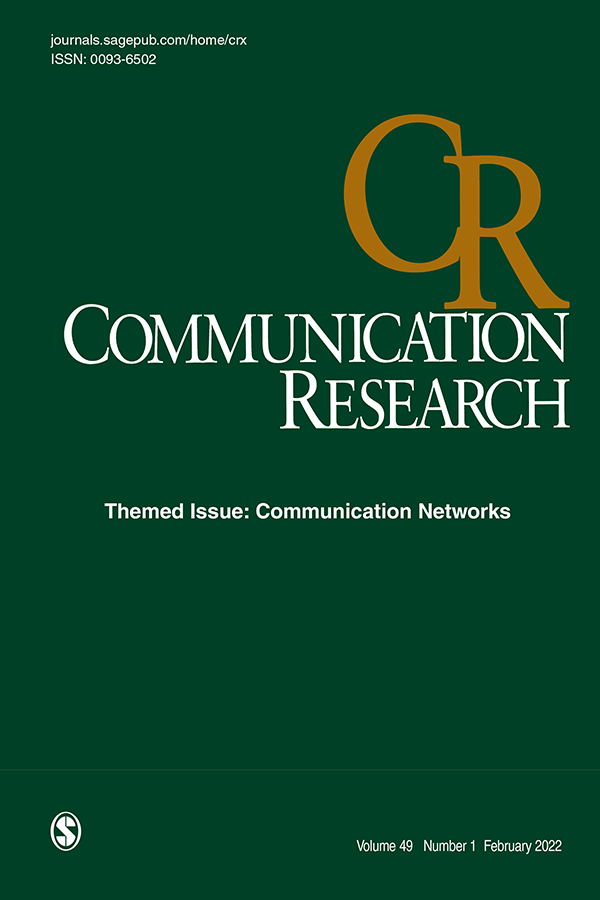Single Episodes of Health Information Seeking, Scanning, and Avoidance: Findings of an Experience Sampling Methods Study of German Residents Suffering From Acute or Chronic Illness
IF 3.2
1区 文学
Q1 COMMUNICATION
引用次数: 0
Abstract
Health information behaviors are situational and dynamic in nature. Being confronted with illness-related uncertainty in a specific situation, certain individuals might consistently or temporarily seek, scan, or avoid information and combine these strategies. Relying on an Experience Sampling Method Design study repeatedly querying健康信息寻找、扫描和回避的单一事件:德国急慢性疾病患者的经验抽样方法研究结果
健康信息行为本质上是情境性和动态性的。在特定情况下面对与疾病相关的不确定性时,某些人可能会持续或暂时地寻找、扫描或避免信息,并将这些策略结合起来。本研究以经验抽样方法设计研究为基础,反复询问N = 383名急性或慢性疾病患者,提供了描述单个事件的健康信息行为的情境视角,区分了信息行为的“特质”和“状态”成分,以及信息行为之间的人与人之间和人与人之间的关系。贝叶斯多层模型说明了由稳定特征和时间状态组成的健康信息行为在特定情况下是如何调整的。信息寻找、扫描和回避的表现形式在有形方面是相同的,但在相关性问题和选择的来源方面有所不同。他们的关系表明,他们的独特性质是负相关的行为。
本文章由计算机程序翻译,如有差异,请以英文原文为准。
求助全文
约1分钟内获得全文
求助全文
来源期刊

Communication Research
COMMUNICATION-
CiteScore
17.10
自引率
0.00%
发文量
20
期刊介绍:
Empirical research in communication began in the 20th century, and there are more researchers pursuing answers to communication questions today than at any other time. The editorial goal of Communication Research is to offer a special opportunity for reflection and change in the new millennium. To qualify for publication, research should, first, be explicitly tied to some form of communication; second, be theoretically driven with results that inform theory; third, use the most rigorous empirical methods; and fourth, be directly linked to the most important problems and issues facing humankind. Critieria do not privilege any particular context; indeed, we believe that the key problems facing humankind occur in close relationships, groups, organiations, and cultures.
 求助内容:
求助内容: 应助结果提醒方式:
应助结果提醒方式:


